If you are a true Home Automation enthusiast constantly on the look out for interesting smart devices, than you must’ve came across a couple of water and gas valve actuators. These are remotely controlled automatic shut off valves, available in two variants:
- Invasive Valve Controllers
- You need to cut the pipe or adjust fittings to install the controller inline
- It works like any other valve (usually ball or butterfly)
- Examples:
- Tuya FK-V02 (Zigbee)
- YoLink YS5002-UC (LoRa)
- Non-Invasive Valve Controllers
- You install the controller on top of your existing valve
- It works by mechanically turning the handle of the valve
- Examples:
- Tuya ZN231392 (Zigbee)
- Zooz Titan ZAC36 (Z-Wave)
I’ve reviewed the Tuya ZN231392 Water/Gas Valve controller a while back, disassembling the device and testing it’s performance on a hot water valve in my basement. Today I’m reviewing a similar device, the Moes Water/Gas Valve Controller ZV-QY-US-EN which I will compare to the ZN231392.
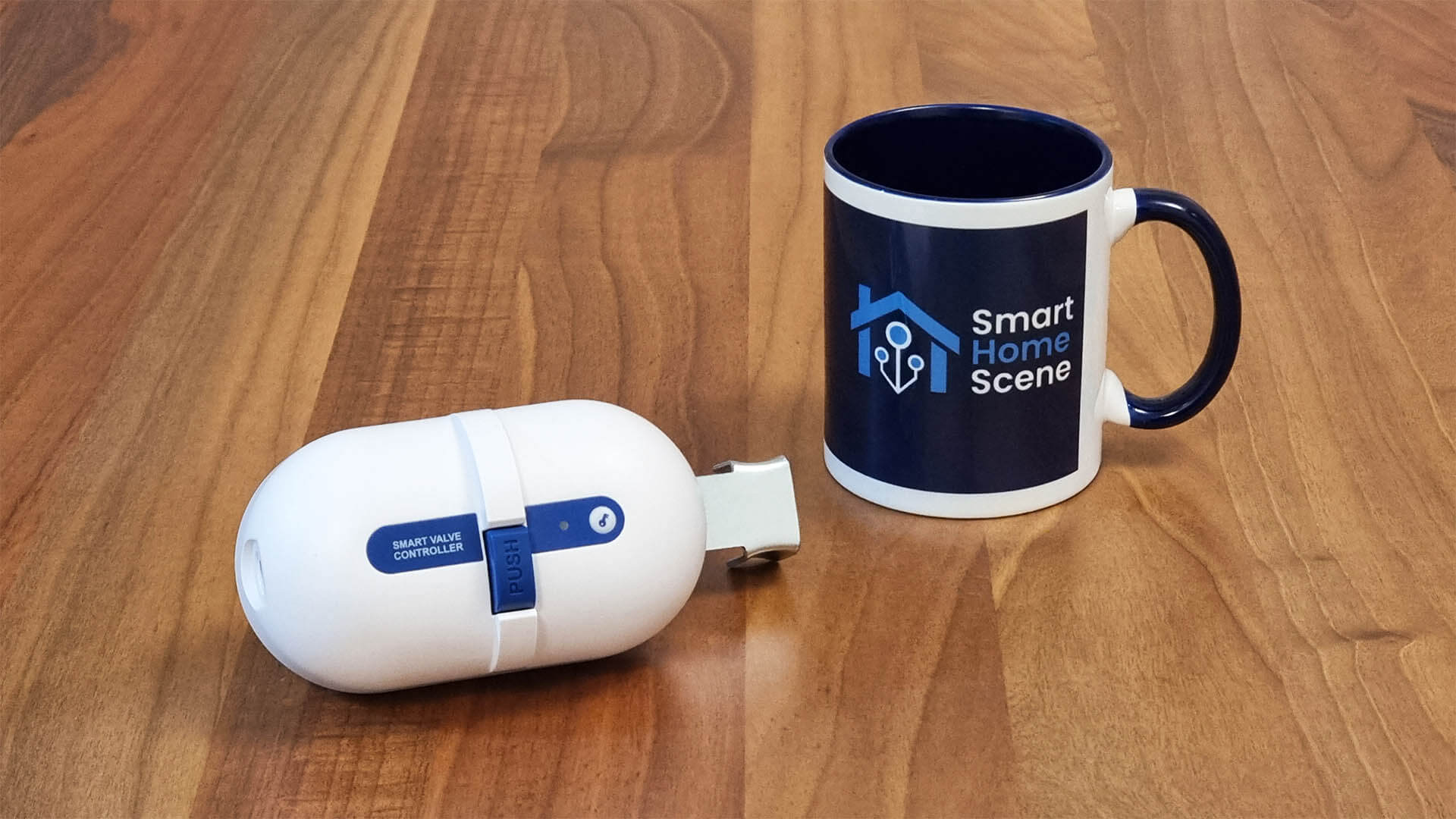
I’ve asked Moes for a sample of this device, however no one got back to me and I decided to just get it from AliExpress as it seemed interesting enough for a review. I paid $25 although you can also get it on Amazon for a bit more.
Technical Specification
- Model: ZV-QY-US-EN
- Product Size: 67x120mm
- Power Supply Input: 100-240V, 50-60Hz
- Power Supply Output: 12V/1A
- Communication: ZigBee 3.0
- Valve Pressure: 1.6 MPa (16 bar)
- Valve Closing/Opening Time: 5~10sec
- Valve Type: Handle Valve
- Torque: 30-60kgf/cm2
Teardown
The Moes Water/Gas Valve Controller ZV-QY-US-EN came packaged in a non-branded cardboard box containing the device, a user manual, a mounting set and a 12V1A power supply adapter. Contents were neatly packed in additional boxes inside the main one.
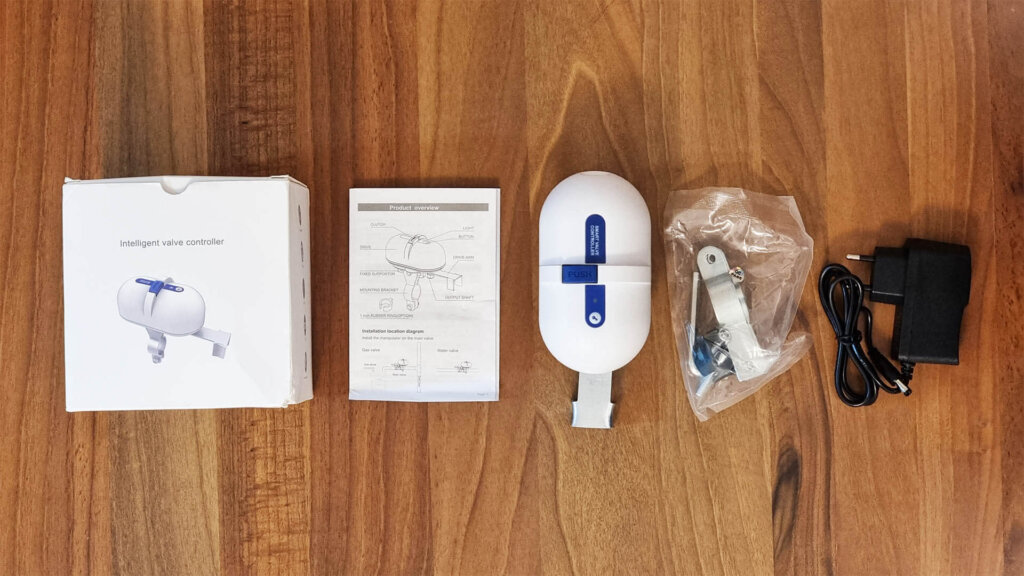
The device resembles the look and feel of a modern PPR pipes installation found in residential homes. It’s rounded body feels smooth and looks unanimous. There is a quick release button in the middle which you can use in case of an emergency (power out) to manually turn the valve this is installed onto.
The pairing button is placed underneath an indicator LED, which blinks while the device is turning.
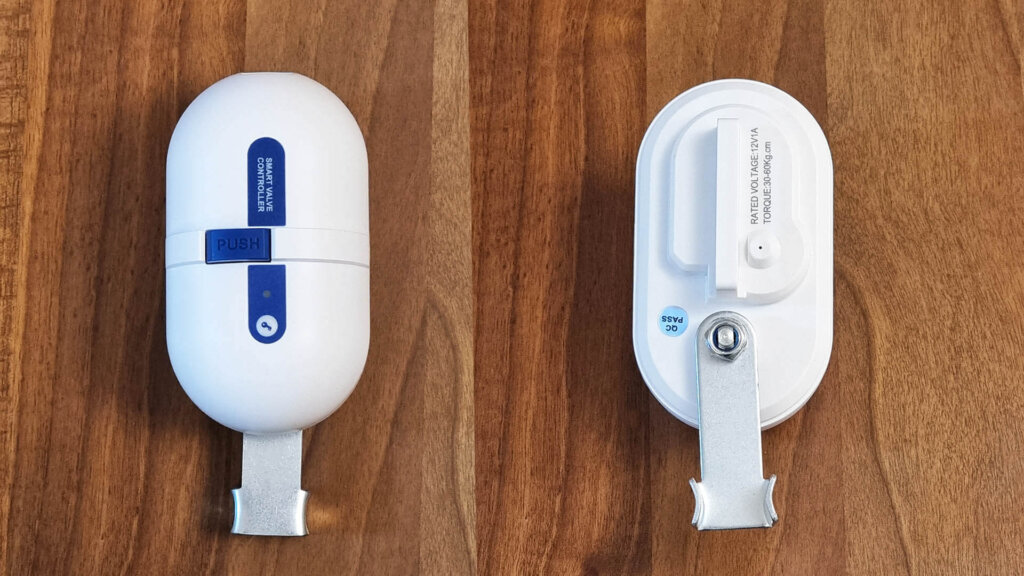
I almost broke the shell trying to pry it open with a screwdriver. The top case was latched onto the bottom one pretty hard, I had to use another set of hands (wife’s).
The main PCB is located to the bottom of the case, while the DC motor lies on top. Everything is attached to the PCB with JST pin connectors, ensuring a more secure connection. The other end of the wires were soldered to the motor and DC input jack, although questionably.
The small PCB installed on the top case contains the pairing button and indicator LED. It’s also connected to the main one with a 4-PIN JST connector.
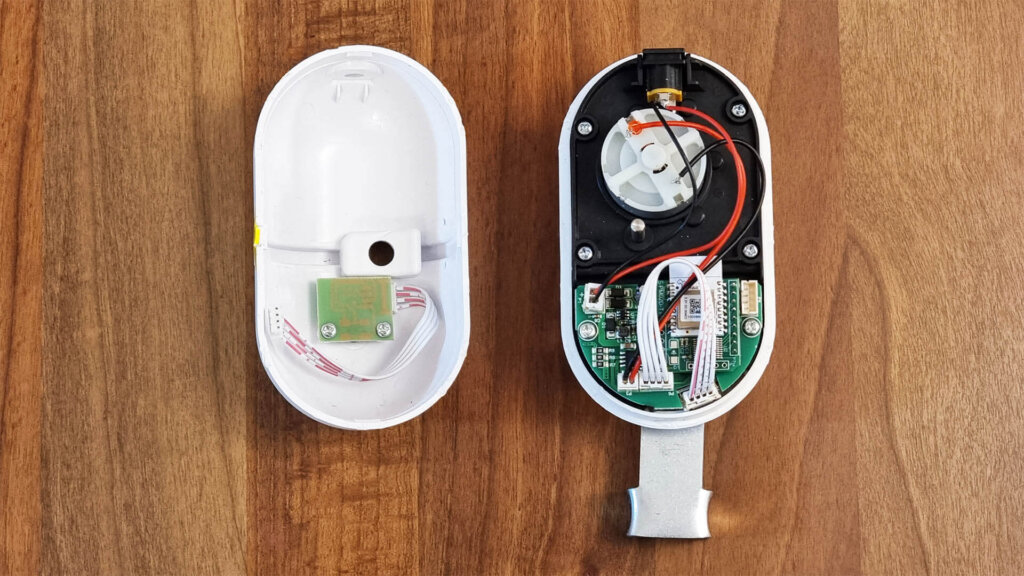
Removing all the wires and zooming into the PCB, I discovered Zigbee communication is enabled by Tuya ZT3L [Datasheet] which is a module embedded with a low-power 32-bit CPU, 1024-KB flash memory and 64-KB RAM.
This chip also powers the Tuya ZN231392 Water/Gas Valve Controller as well as the Loratap SS6400ZB 4-Button Remote.
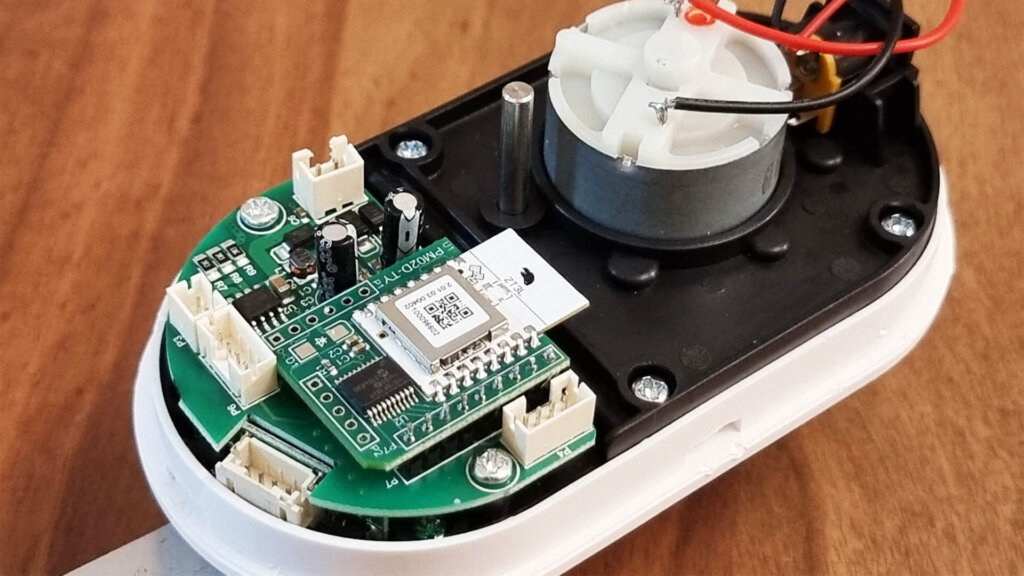
Removing the PCB and DC motor, we get to the core of this valve controller. There are are total of 8 gears used in turning the handle of the device, including the main input gear on the DC motor. 5 of these are stainless steel, while 3 are made of some ABS plastic derivative.
I feel like this is an overcomplication of things. Adding many gears does reduce stress on the motor, but in reality each of these is just another failing point. For comparison, the ZN231392 had a total of 3 gears (Motor input gear, quarter gear and quick-release gear) which is a lot more safe.
As you move along the gears, their teeth size grows reaching the largest at the end with the quarter gear. Now this is where I have a problem. The flow starts with the ABS gears, which have tiny teeth. I feel like these can easily get chipped and damaged if the handle is meet with enough pressure, resulting in slippage. Its common practice to use only one plastic or similar gear as a safety gear, but this valve just has too many.
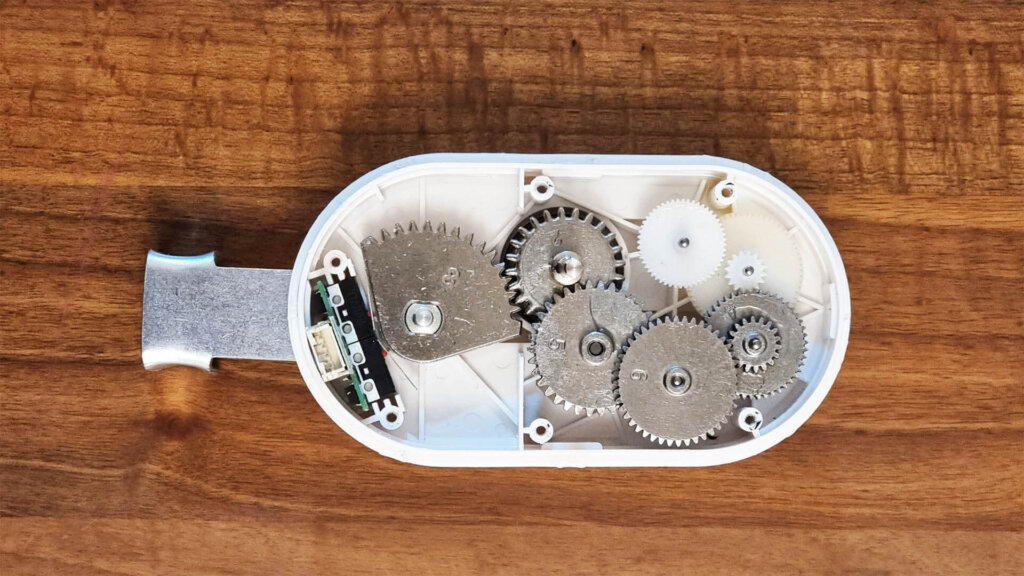
The start/stop principle of operation is the same as with ZN231392. Whenever the quarter gear reaches the limit on one side, the button on the microswitch is pushed and the DC motor stops. The same happens in the other direction, when an open action is toggled. Simple and effective.
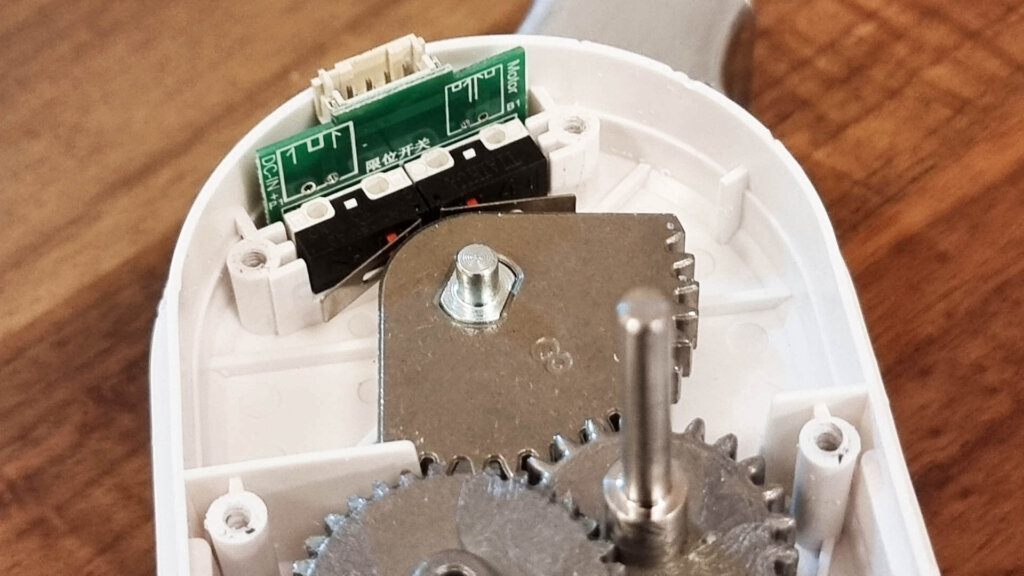
Finally, here’s an image of the Moes ZV-QY-US-EN Valve Controller fully disassembled:
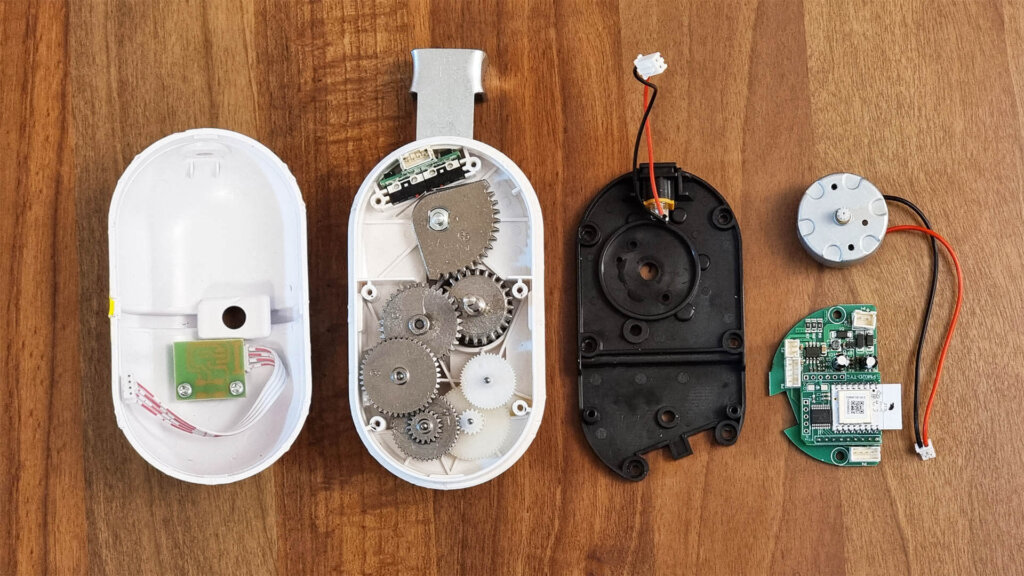
Installation
Installing the Moes ZV-QY-US-EN is simple of terms of know-how, although it does require some skill for properly mounting the device. This image perfectly illustrates the mounting position and where everything goes:
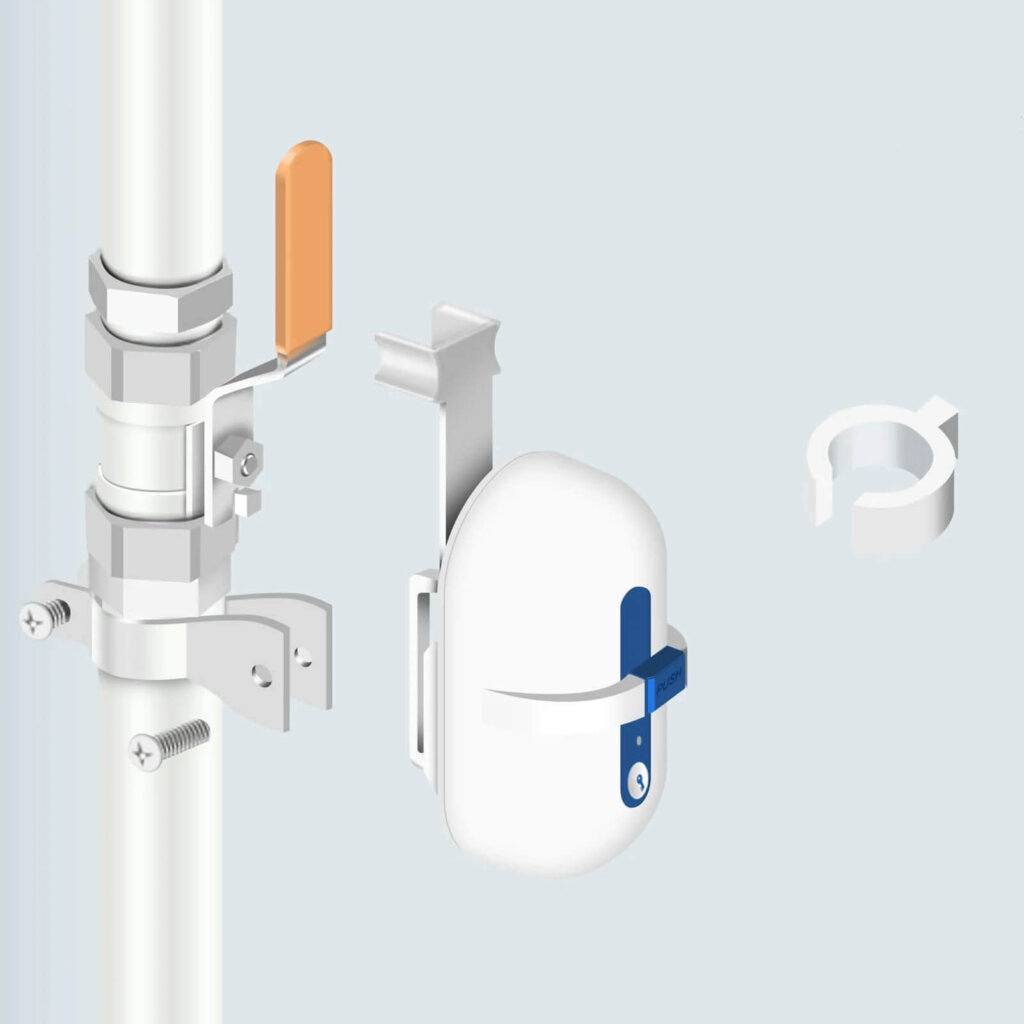
- Attach the mounting the bracket on the pipe
- Use the included rubber padding to avoid damaging it, manufacturer states to be used as a filler for pipes less than 1 inch in diameter, but it’s best to use it anyway as padding
- Don’t overtighten the screws, you can potentially burst your pipe
- Place the valve controller in place
- Move it up or down and make it sure grips the handle towards the end, this will give it more leverage while turning thus lowering strain on the gears
- Secure it with the Allen screws
- Done!
Compatible valve types
Since the manufacturer doesn’t include a compatibility list, I made an image of valves for informational purposes that this device can be used with. In summary, it can be attached to any any 90° handle operated valve found in a standard domestic installation, which are usually ball valves.
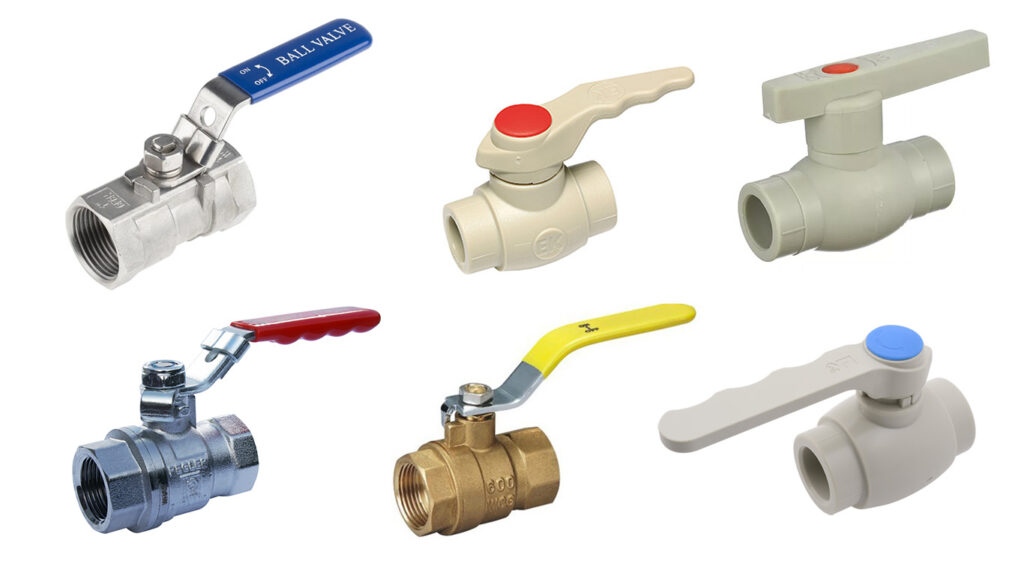
It’s possible you can modify this device to work with other valves with shorter handles, although I feel it will not grip securely and can slip out of place.
Home Assistant Integration
The Moes ZV-QY-US-EN Valve Controller can work in Home Assistant through ZHA (Custom Quirk) and Zigbee2MQTT. To pair the device to your coordinator, simply press the button 3 times in quick succession until the LED starts blinking.
Zigbee2MQTT
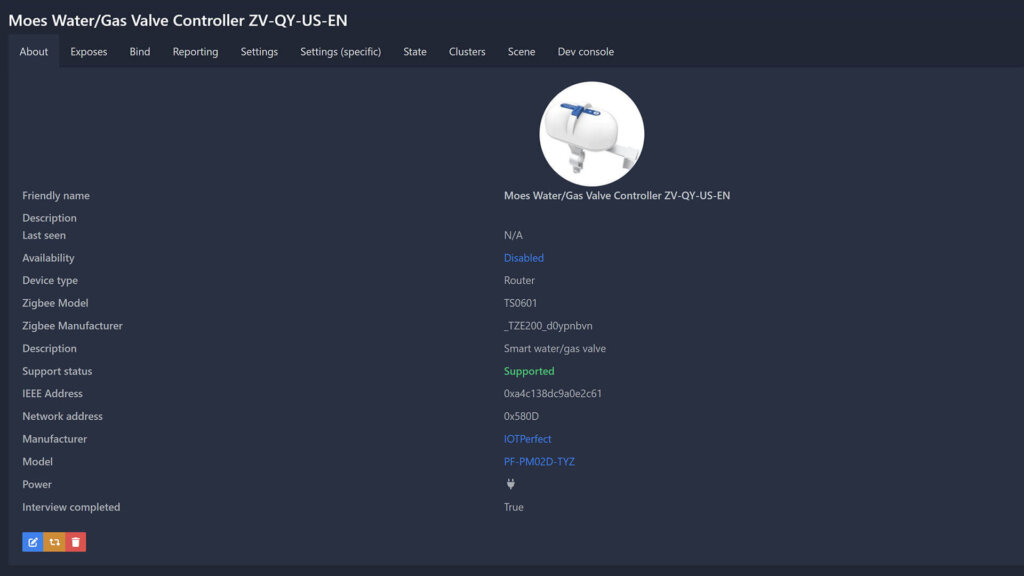
Once paired in Zigbee2MQTT, it is identified as model PF-PM02D-TYZ by manufacturer IOTPerfect and as Zigbee Manufacturer _TZE200_d0ypnbvn. IOTPerfect is a reseller brand of this device, the original external converter was created for this company’s model so this is why it’s named like it is.
The device is also a Router, it can relay Zigbee traffic and improve your mesh network. Besides the LQI (Signal quality) entity, it exposes only a single controllable entity in Home Assistant from the switch domain. Toggling the switch ON opens the valve controller while toggling it OFF closes it.
ZHA
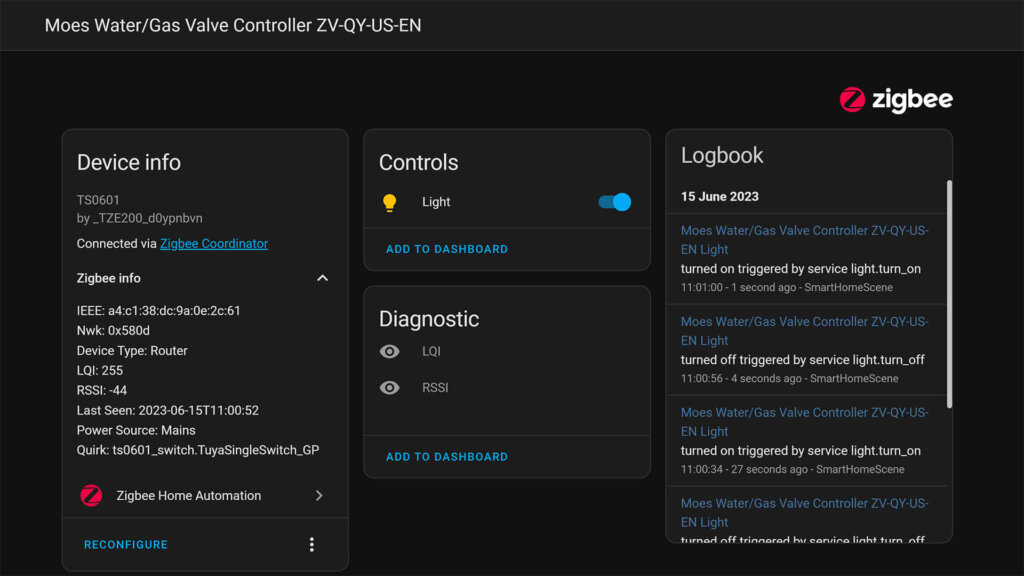
To make this device work is ZHA, a custom quirk needs to be applied. This involves reusing one of the existing Tuya Single Switch device handlers and applying it to this valve controller. To do this:
- Create a new directory in the config folder of Home Assistant
- For example /config/custom_zha_quirks
- Add the following to your configuration.yaml file
#Enable ZHA Custom Quirks
zha:
custom_quirks_path: /config/custom_zha_quirks/- Download this custom quirk [ts0601_switch.zip]
- Extract the zip file and place the file [ts0601_switch.py] in the /config/custom_zha_quirks directory
- Restart Home Assistant
- Pair the Moes ZV-QY-US-EN Valve Controller to your coordinator
The custom quirk will be automatically applied and the device correctly labelled in ZHA. You can toggle the valve controller like you normally would, although the entity is from the light domain by default. You can change it to switch by clicking it and selecting Switch from the Show as dropdown menu.
Moes ZV-QY-US-EN vs Tuya ZN231392
Since this is a second device of this type I’m reviewing, it makes sense to compare the two and note some differences. I highly recommend you read the ZN231392 review first though, to get a sense of it’s quality and way of operation.
Shape, size, design
Starting with the most obvious difference: the size, shape and design of these valve controllers. The Moes has a longer body with more rounded edges, while the Tuya is bulkier and taller. The weight the about the same of both, with the Tuya feeling more compact.
The quick release button on the Moes it placed on the top, while the Tuya has a metal ring that you pull out on the bottom instead. The Moes’s solution is more convenient and the button easier to reach in case of an emergency.
Both devices have the pairing button as well as the indicator LED on the top of their cases.
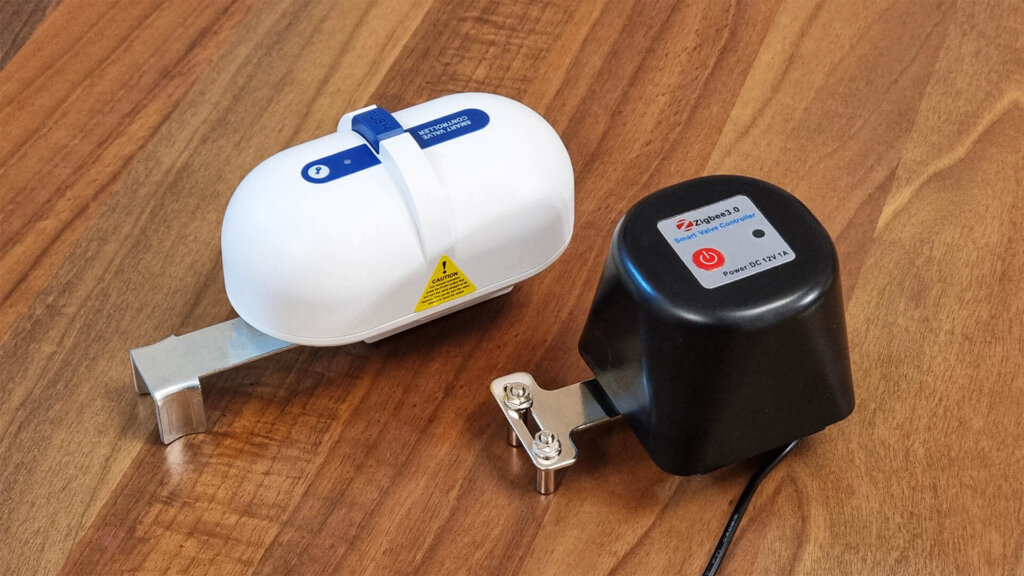
The Moes seems like it was designed with modern piping appearance in mind, being a more aesthetically pleasing gadget than the Tuya. Colors are proper, so if the valve you are trying to control is somewhere in sight there is no reason to try and hide it.
The Tuya is not necessarily ugly, although I do prefer the look on the Moes.
Hardware and Build Quality
From the first image, you get the impression that the Moes has a longer valve turning arm, but flipping them on their back reveals this is not the case. They are both the same length, just placed a little bit differently.
However, the Tuya has a more versatile gripping arm than the Moes, whose width is limited by it’s design. The Tuya can be adjusted by spreading the two screws apart, which results in the ability to grip wider valve handles.
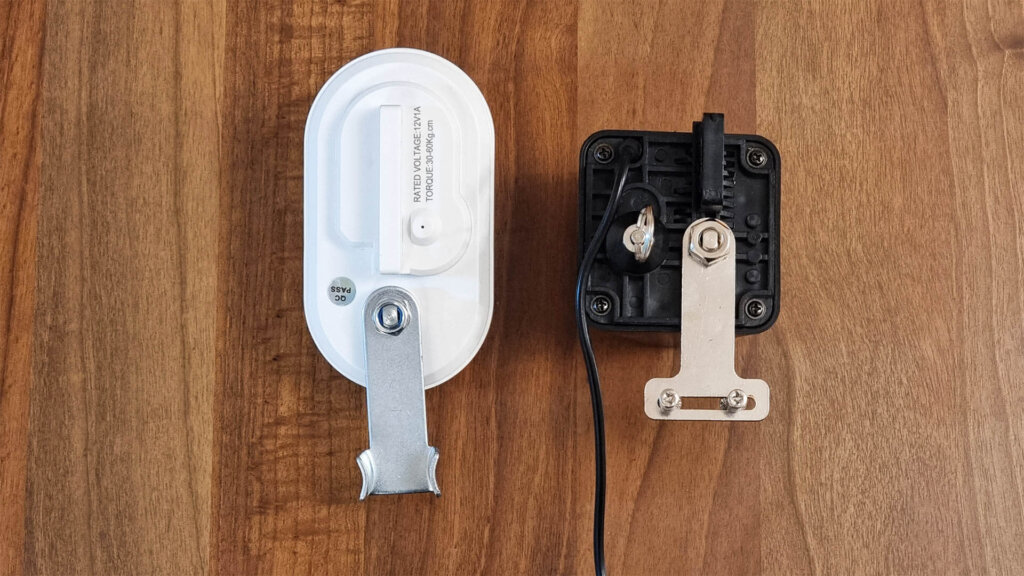
When it comes to the core component of these devices, the gears actually turning the valve handle, there are some major differences.
Like I mentioned above in the teardown section, the Moes has much more gears (8 total) running when the device is toggled. In my opinion, this overcomplicates things and each gear is just another potential failing point. Further more, the 3 plastic gears have tiny teeth that can slip out of place if enough pressure is introduced.
I tested this theory by firmly gripping the turning arm with my hands while the device is secured, and although the gears did not slip, it did stop in place. There is possibly some kind of software safety switch which turns off the motor above a certain threshold, there is no way of knowing for sure. It reset by pressing the button again.
The Tuya doesn’t have this kind of a problem. It has 3 stainless steel gears in total with larger teeth that slot each other neatly. The wear and tear on those will be minimal compared to the plastic ones on the Moes. This is a win for the Tuya ZN231392 Valve Controller.
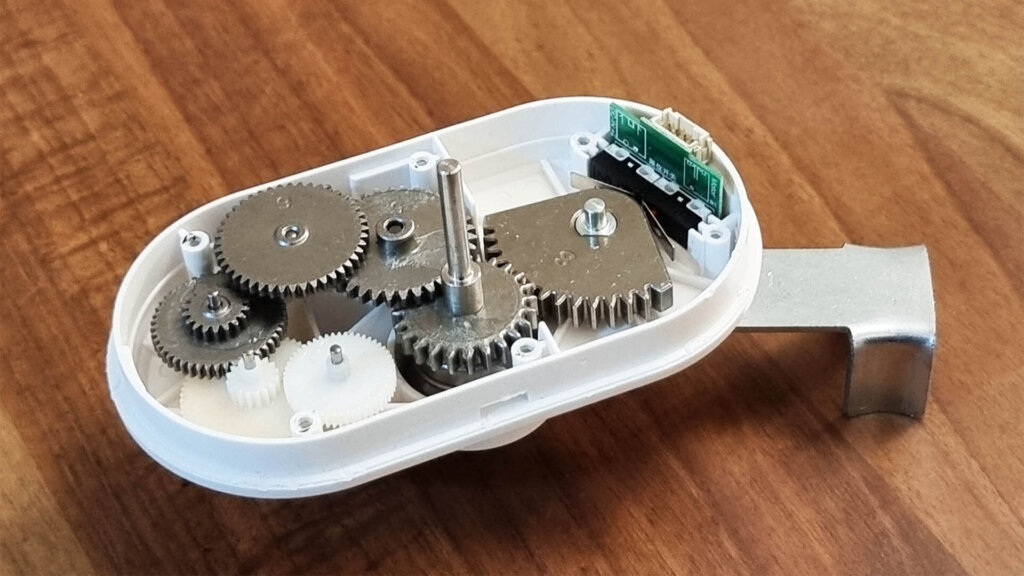
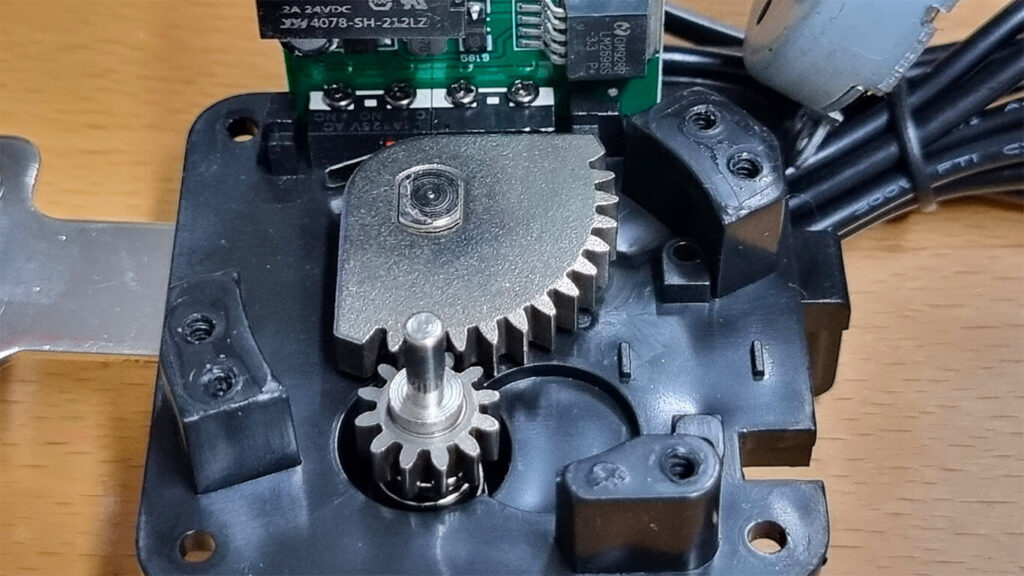
The principle of operation is the same: When the quarter gear presses the limit microswitch, the motion stops. I don’t consider these a weak point, especially since I know these types of microswitches were used in old Arcade cabinets back in the day, which endured constant abuse from retro gamers constantly mashing the buttons.
Overall, the Tuya ZN231392 is the better device when it comes to hardware durability and build quality.
Power and Connectivity
In terms of Zigbee communication and stability, they are both powered by the same ZT3L module so I expect them to behave the same. Even though I haven’t extensively tested the Moes, I’ve had the Tuya for a while now and experienced no connectivity issues or network drops. Both devices operate as a Router.
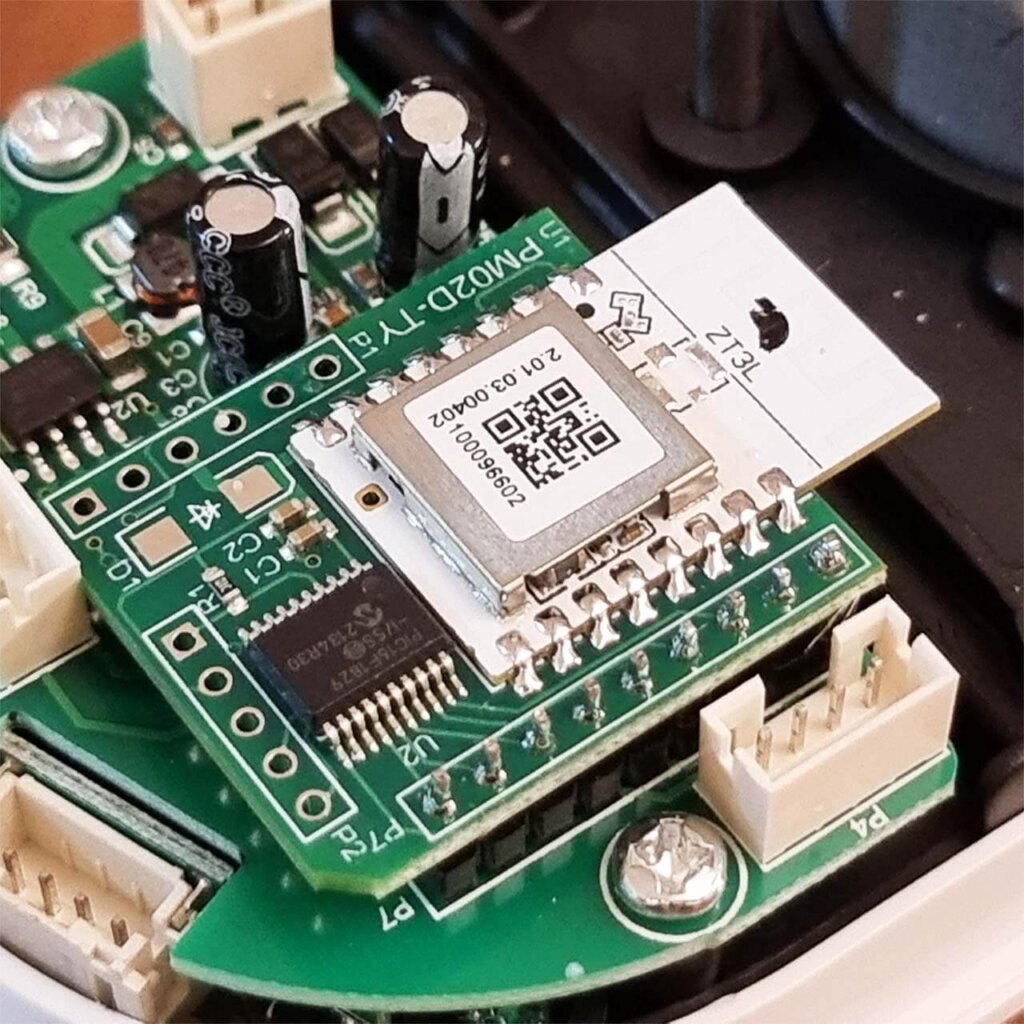
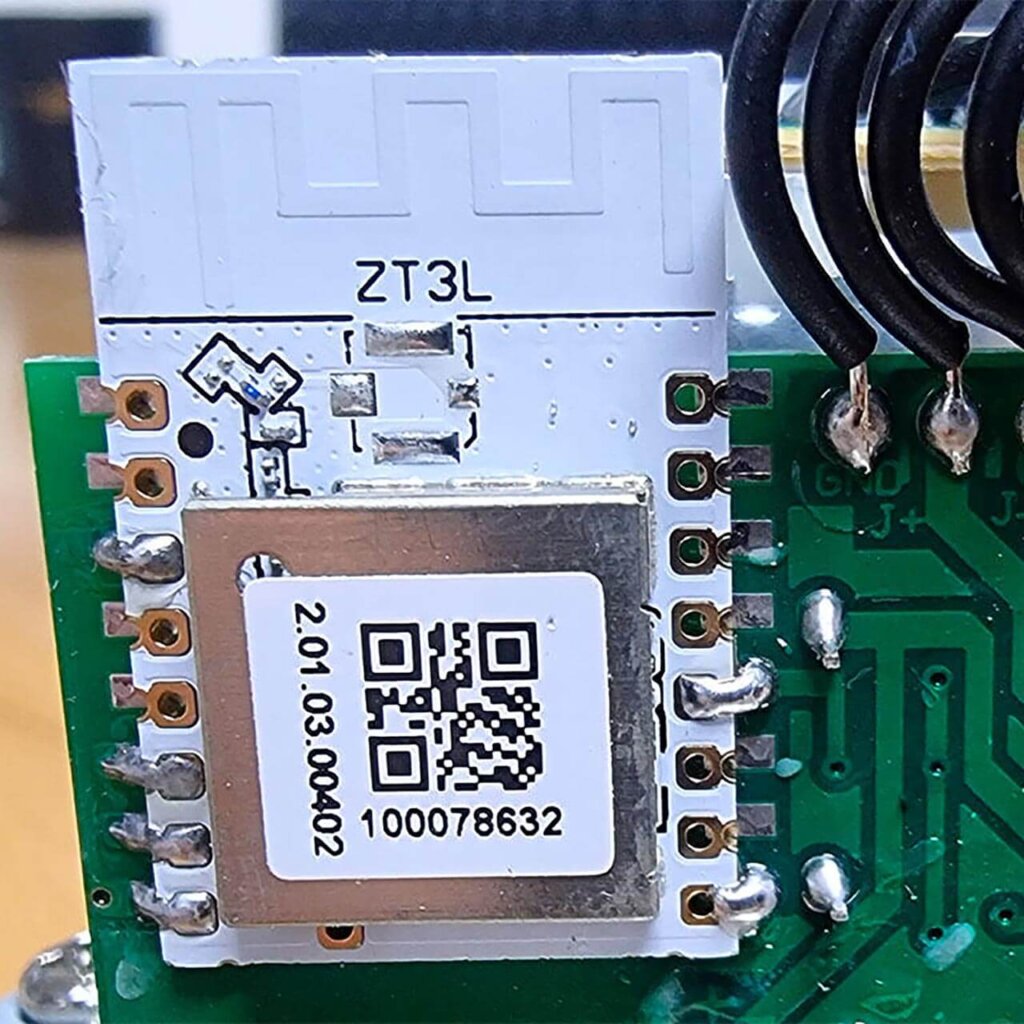
For powering each device, a 12V1A power supply is needed which included with both devices. The adapter itself can be powered by 100-240V AC, so it’s compatible with European and US households.
The Tuya model has a longer cable though (2 meters) compared to the Moes (1 meter). You can extend this with a simple extension cord if you need to.
Performance
I recorded a short video, in which you can see these devices completing a single turning cycle. The speed of a single 90°C rotation is almost the same for both the Moes and Tuya. I toggle both devices with a simple automation with the Loratap remote:
When it comes to actual performance, they are both rated for 30-60kgf/cm2. This seems to be inline with their specs, I did not notice any difference in strength, they seem identical.
Pricing and Availability
The price of the Tuya ZN231392 tops out at about $25 on any listing on AliExpress, although you can find it as low as $20. The Moes ZV-QY-US-EN costs more, sold for about $35 on the official store on AliExpress.
Both devices are priced the same at about $35 on Amazon. Here’s a link for the Tuya [Amazon.com] and another for the Moes [Amazon.com].
Summary and Final Thoughts
There are a few important things that you need to be aware of if you decide to control a valve in your home with this device. If it fails in closing your garden sprinkler, it’s no big deal, maybe you flood your back yard. However, if it fails to close a gas valve, that’s a potential disaster.
First and foremost, ensure you have an absolutely stable and solidified Zigbee mesh network with many routers that will ensure no packages are lost enroute to the device. It is also wise to enable availability for this device in Zigbee2MQTT, which will ping it from time to time and report it’s state.
Second, make sure the device is securely installed on your pipe and valve. Do not let it slip and raddle, but do not overtighten the screws either. The turning arm needs to grip the valve handle firmly, test this a bunch of times before you are confident it’s good.
If you ensure these two criteria are met, you can safely add a valve controller of this type to your smart home. However, If I had to choose one, I would get the Tuya ZN231392 without question. Sure, the Moes is prettier but those 8 gears give me no piece of mind.
I do not like the gear setup of the Moes ZV-QY-US-EN, I believe it adds to much complexity and failure points to itself. Another thing that makes the Tuya the winner between the two is the flexibility of the turning arm. You can adjust the screws to get a better grip over the handle, while you cannot do this on the Moes.
I feel like the Moes can work for smooth and gentler valves, not something that needs a fair bit of power. If you do decide to get one, I strongly suggest the Tuya ZN231392. Here are few links of both devices.
Tuya Water/Gas Valve Controller ZN231392 ~ $25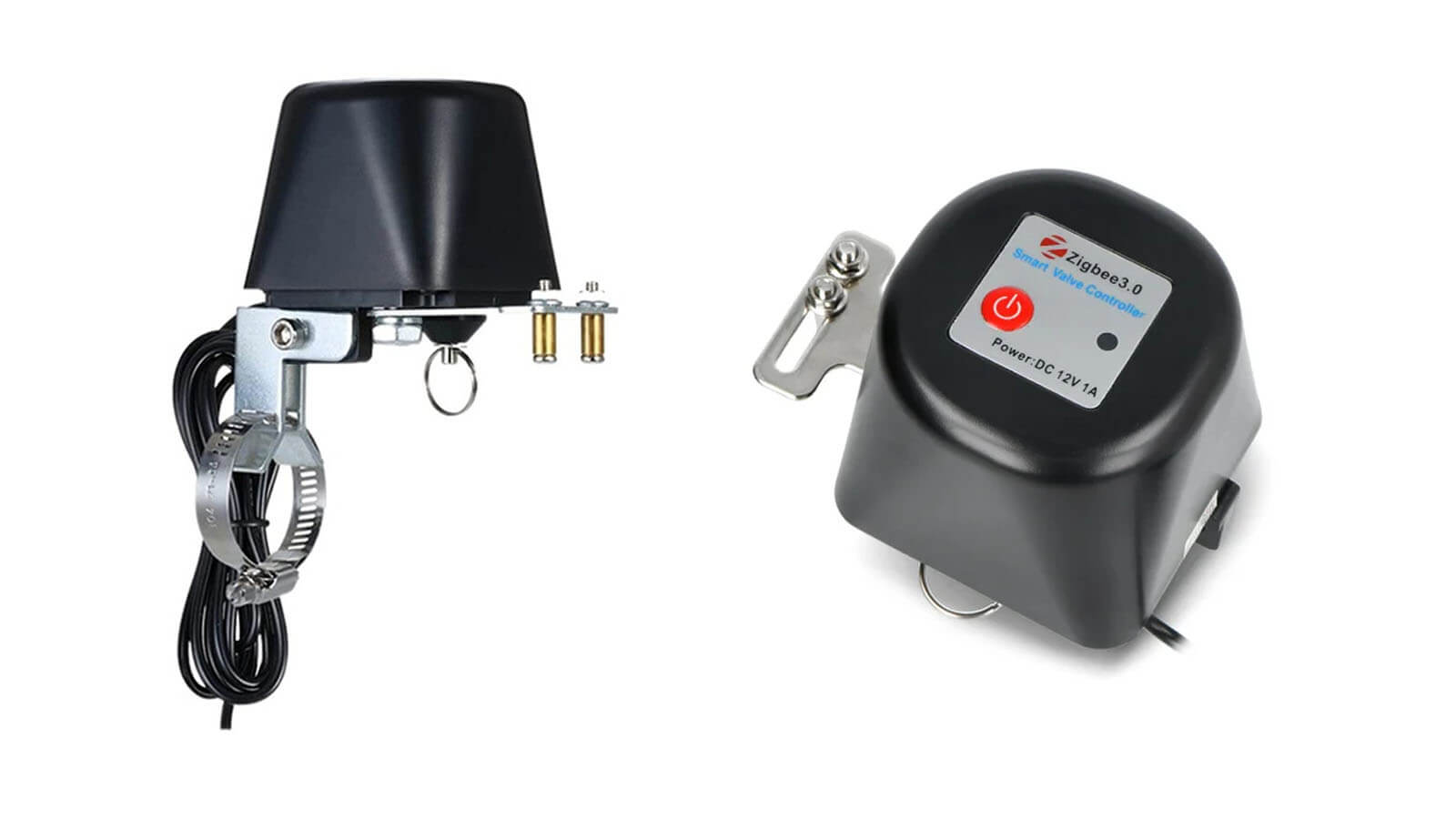
![]()
AliExpress | AliExpress | AliExpress![]()
United States | Canada | United Kingdom
Germany | Netherlands | Sweden | Spain
France | Italy | Poland | Australia
*If links fail to open, try disabling your AdBlocker.
Moes Water/Gas Valve Controller ZV-QY-US-EN ~ $35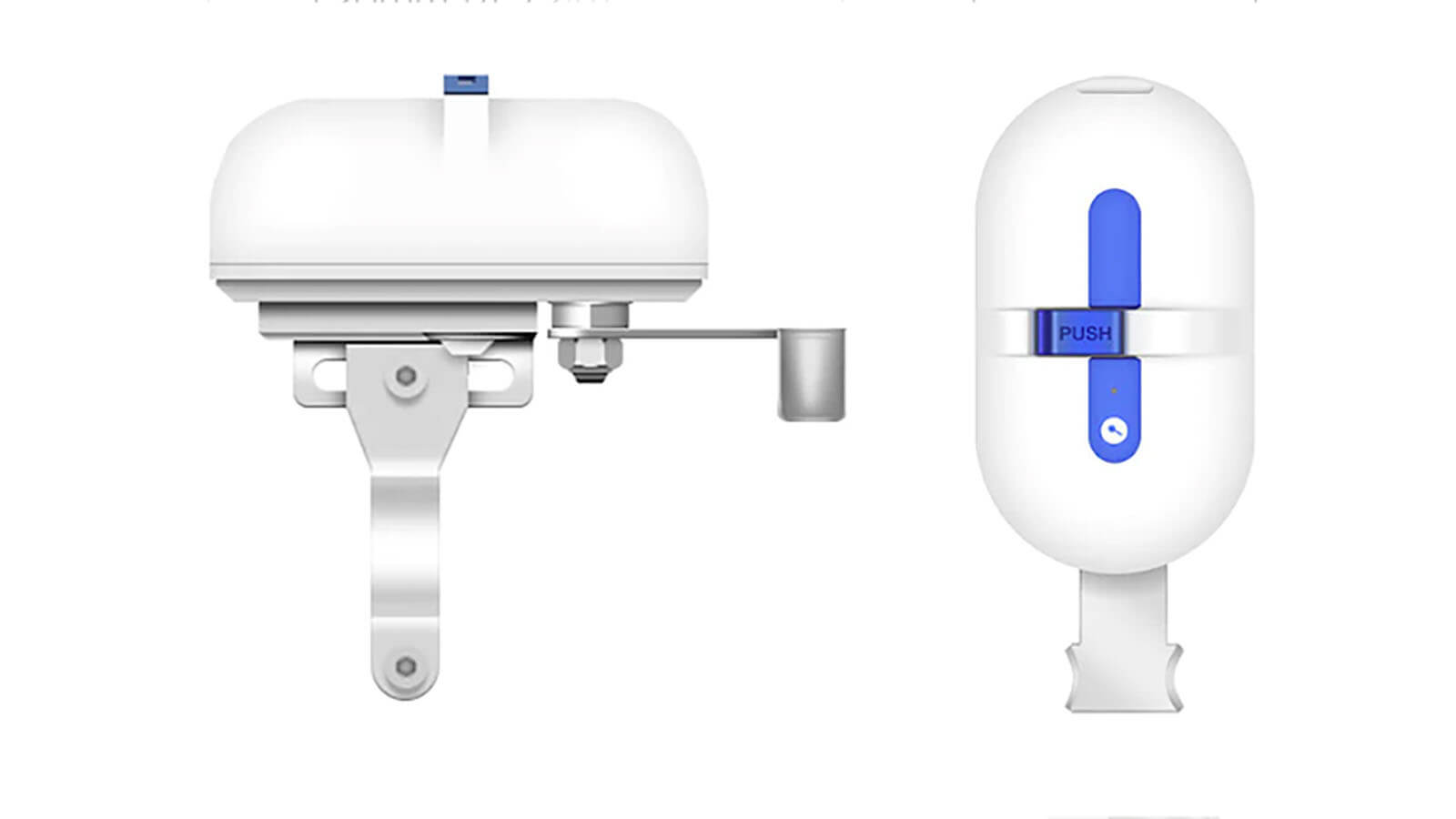
![]()
AliExpress | AliExpress | AliExpress![]()
United States | Canada | United Kingdom
Germany | Netherlands | Sweden | Spain
France | Italy | Poland | Australia
*If links fail to open, try disabling your AdBlocker.
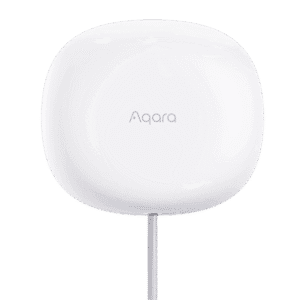









I’d look at the exact same data you collected, and come to an opposite conclusion.
Gears are pretty amazing, and a well known engineering. Having 8 gears should result in a lot less stress on the motor, as there is a higher effective gear ratio in the Moes model. So I’d be worried that the Tuya motor is going to burn out, compared to the Moes.
However, I think we both are theorizing. I’d love to get the opinion of a mechanical engineer.
I agree, someone with better knowledge might provide a more useful and accurate insight.
My logic is, It’s not that having 8 gears is a bad thing by itself.
It’s the fact that having 8 gears in this type of device is not needed in my opinion. I am not confident in their implementation, the whole thing seems flimsy to me.
Further, the motor has a plastic gear (the 1st gear) with these tiny tiny teeth that I feel are going to grind themselves to a halt pretty soon. Or slip.
I might be wrong, I am not an engineer.
This is just my opinion of the device.
Cheers! 🙂
Hello,
Concerning the material of gear , i would not be so focused on the steel.
Many high-load applications used “plastic” gears . And there are so many different type of “plastic” , nylon, pom, … depending on the usage/
“My” e-bike used nylon-gear, and transferred more than 250W peak power for more than 10 000km.
In addition the tear would be pretty even and low if used with low friction plastic (much less tear than a bad quality steel without any oil/greases)
However, the confidence in the global quality is important, as a “good” mechanical engineer could do a great achivement with either metal or plastic gears.
IMHO the fact that MOES stop working when blocked is a good security feature (however, does it give the fact that it stuck and not fully closed/open other zigbee ?)